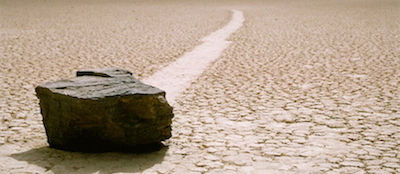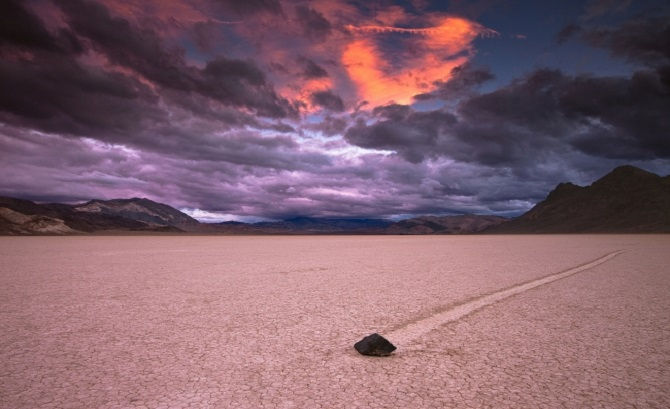Running Rocks in Death Valley
- by Benjamin Radford, Live Science Contributor
- Nov 8, 2015
- 2 min read
California's remote, beautiful, and foreboding Death Valley has held a mystery for almost a century: it has stones that seem to move on their own, when no one is looking. It happens at Racetrack Playa, a dry lakebed known for its "sailing stones." This effect occurs at a few other places as well, though Death Valley is the most famous spot. Thanks to some high-tech sleuthing, the mystery may have been solved, at least partly.

In their book "Mysteries of the World: Unexplained Wonders and Mysterious Phenomena," Herbert Genzmer and Ulrich Hellenbrand state that "the perfectly flat, dry ground is scoured and scraped with paths that suggest these boulders are being moved along the ground... there is no indication of how this movement could have been brought about by outside forces, and no stone has ever been observed actually making its way across the ground."
Not all of the stones in Death Valley move. Those that do only move every two to three years, and they don't all move at the same time or in the same direction. In fact, some seem to have made abrupt 90-degree turns, judging from the tracks, which range from tens of feet to hundreds of feet long. Most of the stones are not huge boulders but instead range from about 6 to 18 inches (15 to 45 centimeters) in diameter.

Theories
Several theories have been proposed to explain this curious phenomenon, including some sort of localized, unknown magnetic effect. This theory has been discounted for a variety of reasons including that many of the stones do not contain significant amounts of magnetic elements such as iron, and that the stones should gradually assemble in one place — which they don't. Some have suggested that the strong winds that blow through the area might move the rocks after the lakebed has become slick.
Why does this mystery remain unclear?
Though such explanations are plausible, they were very difficult to prove since no one had actually seen or recorded the stones' movements. Understandably, no one has volunteered to spend every minute of their lives — day and night for several years — enduring temperatures that can reach well above 100 degrees F (37 C), hoping to see a stone move. Furthermore, Racetrack Playa is almost three miles long and over a mile wide (4.8 by 1.6 kilometers). A person of course can't be everywhere at once, and would have to pick one or two rocks to closely and continually monitor just in case they happen to suddenly move. And can you imagine the frustration if someone spent two years watching a non-moving rock, only to later learn that several other rocks on another part of the lakebed had moved while they weren't watching?
























コメント